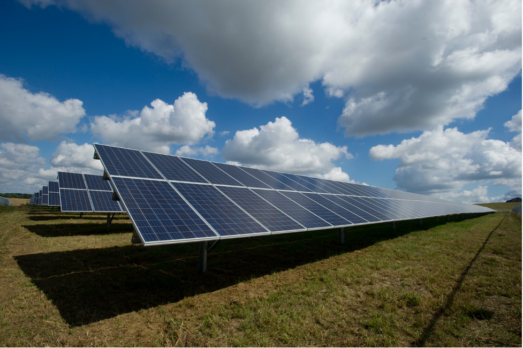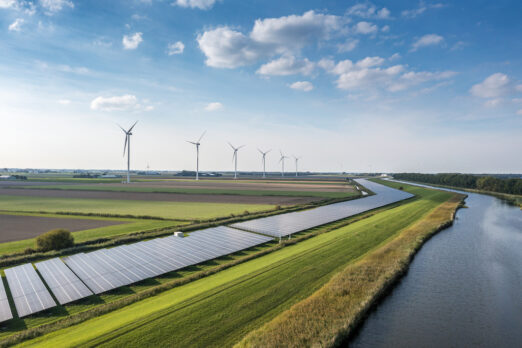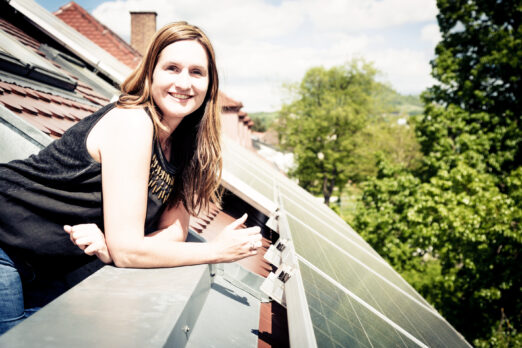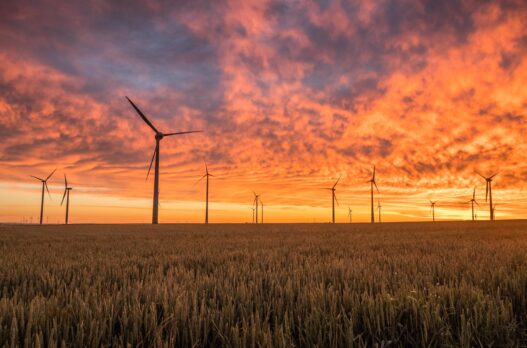
2023 was a bleak year for the climate, with the hottest temperatures on record. But it was also a year when global renewable energy capacity increased 50% over last year, getting the world closer to the goal of tripling renewable capacity by 2030, according to the IEA. The U.S. energy transition made great strides thanks to a combination of government investment, incentives, innovation and public demand.
Here are four reasons to be hopeful about the energy transition in 2024:
1. Solar energy is surging
In the U.S., solar energy was a bright spot in 2023. The U.S. installed a record-breaking 33 gigawatts (GW) of solar energy, a 55% growth over last year. Utility-scale installations account for the major upswing, and are expected to have grown by 86% compared to last year, according to the Solar Energy Industries Association (SEIA) and Wood Mackenzie.

The Infrastructure Investment and Jobs Act (IIJA) and Inflation Reduction Act (IRA) have spurred investment in solar and storage in the U.S. According to Deloitte, utility-scale solar had the largest share of announced ($92 billion) and actual ($52 billion) investment across 38 states. The EIA predicts that solar electricity generation will continue to be the leading source of growth through the end of 2025, rising from 4% in 2023 to 7% in 2025. California, Texas, Florida, North Carolina and Arizona currently generate the most solar energy.
2. Coal-fired power generation is declining
U.S. energy-related CO2 emissions decreased 3% in 2023 compared to 2022, primarily due to the retirement of coal-fired power plants. Electricity generation from solar and wind in the U.S. is expected to surpass power generation from coal for the first time in 2024. However, natural gas production has increased to fill the gap left by coal, accounting for 41% of US power generation. The EIA predicts that in 2024, gas will have a 42% share of U.S. electricity, with coal at 15%, all renewables (not just wind and solar) at 24%, and nuclear at 19%.
3. Energy storage is expected to double
One of the biggest obstacles in the transition to clean energy is storage. Federal legislation, investment and innovation are super-charging the battery storage market. Texas and California are leading with new additions of battery storage. Battery storage could increase by 89% by the end of 2024 if all planned storage systems come online, according to the EIA. Battery storage capacity is expected to account for 21% of new US renewable capacity in 2024.

4. Historic federal investment to modernize the grid
Integrating more clean energy sources and storage into the grid requires upgrading the grid infrastructure to increase storage, expand transmission and ensure a reliable energy supply. Fortunately, right now the federal government is making the largest direct investment in the electric grid in history to help states and utilities make these upgrades.
As part of the Bipartisan Infrastructure Law, the government is administering the $10.5 billion Grid Resilience and Innovation Partnership (GRIP) Program to enhance grid flexibility and improve the resilience of the power system. States and regional partners have opportunities to use these federal funds to facilitate transmission planning and grid enhancements through early 2024. This includes $2 billion available in second-round GRIP competitive funds and $760 million in Transmission Siting and Economic Development program funding. (Learn more @ Itron.)
While challenges remain, the U.S. is making strong progress in its energy transition. 2024 looks to be a pivotal year to accelerate the transition to decarbonize our grid and pave the way to a cleaner energy future.

Generating electricity requires a huge amount of water. We use fresh water to mine and burn coal, frack and pump…

With the increasing frequency of climate-related disasters, our children are growing up in a changing world. This is a growing…

The world is expected to add as much renewable power in the next five years as it did in the…